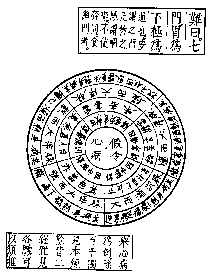Palpation of acupuncture points
 This method of palpation can be traced back to the early
medical book The Internal Classic. One of its parts Miraculous
Pivot says : " In order to see if the Back - Shu Point is
located with accuracy, one may press the region to see if the
patient feels sore or if the patient ' s original soreness gets
relieved, in which case, the point has been located with
accuracy. The Fifteenth chapter of the same book also states,
" When the Five zang organs are diseased, the symptoms will
manifest themselves in the conditions of the twelve Yuan - Primary
Points with which they are connected. If we fully grasp the
connections between the zang organs and their corresponding
Yuan - Primary Points as well as the latter ' s external
manifestations, there will be no difficulty for us to understand
the nature of the diseases of the Five zang organs. Chinese
Acupuncture and Moxibustion Clinical practice in the recent years
has demonstrated that during an illness tenderness or sensative
reactions may occur along the courses of the involved meridians
or at certain points where the qi of the meridian is converged.
In gastralgia, for instance, tenderness may occur at Weishu ( B
21 ) and Zusanii ( S 36 ) ; in disorders of the liver there may be
tenderness at Ganshu ( B 18 ) and Qimen ( Liv 14 ) : while in
appendicitis, it may occur at Shangjuxu ( S 37 ) the lower He - Sea
Point of the large intestine. These signs may assist in making
dignosis for disorders of internal organs. This method of palpation can be traced back to the early
medical book The Internal Classic. One of its parts Miraculous
Pivot says : " In order to see if the Back - Shu Point is
located with accuracy, one may press the region to see if the
patient feels sore or if the patient ' s original soreness gets
relieved, in which case, the point has been located with
accuracy. The Fifteenth chapter of the same book also states,
" When the Five zang organs are diseased, the symptoms will
manifest themselves in the conditions of the twelve Yuan - Primary
Points with which they are connected. If we fully grasp the
connections between the zang organs and their corresponding
Yuan - Primary Points as well as the latter ' s external
manifestations, there will be no difficulty for us to understand
the nature of the diseases of the Five zang organs. Chinese
Acupuncture and Moxibustion Clinical practice in the recent years
has demonstrated that during an illness tenderness or sensative
reactions may occur along the courses of the involved meridians
or at certain points where the qi of the meridian is converged.
In gastralgia, for instance, tenderness may occur at Weishu ( B
21 ) and Zusanii ( S 36 ) ; in disorders of the liver there may be
tenderness at Ganshu ( B 18 ) and Qimen ( Liv 14 ) : while in
appendicitis, it may occur at Shangjuxu ( S 37 ) the lower He - Sea
Point of the large intestine. These signs may assist in making
dignosis for disorders of internal organs.
|
